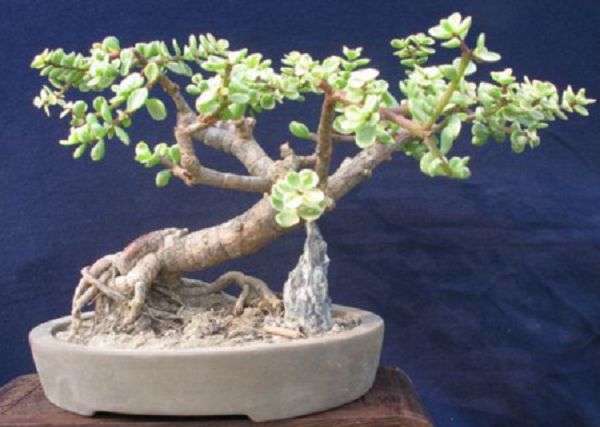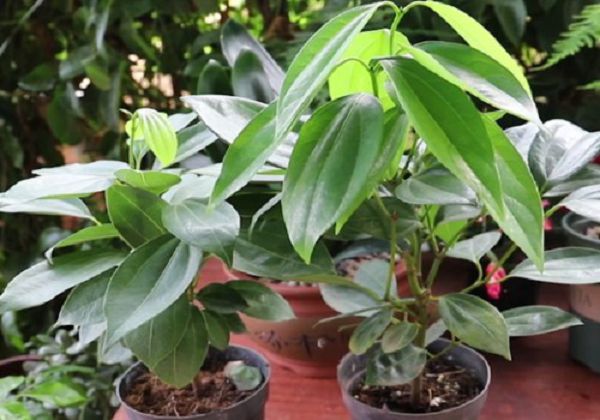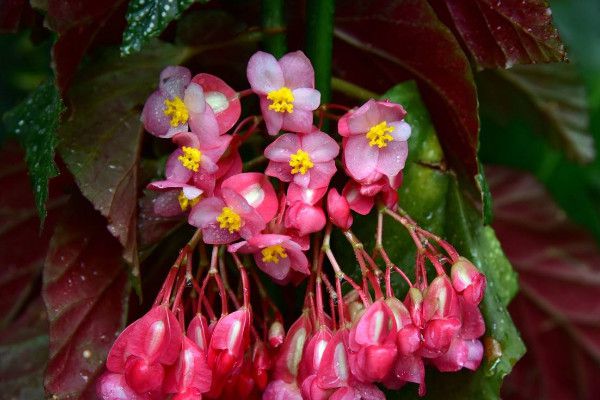Techniques for making bonsai with golden branches and jade leaves

Golden branches and jade leaves have strong adaptability to the environment, not only like light and drought, but also more resistant to pruning, which is very suitable for potted plants on the balcony and is a good talent for making bonsai. The bonsai of golden branches and jade leaves can not only be made into scenery independently, but also can be planted and watched together, all of which have high ornamental value. However, in the process of making bonsai with golden branches and jade leaves, we need to have certain operational skills. Today, the editor will share with you.
Bonsai creation is not only a matter of physical and mental pleasure, but also a means to exercise thinking and self-improvement skills. For bonsai creators, this process is a process of enjoyment. However, we need to create in accordance with scientific and reasonable techniques.
1. Skills in drawing materials.
Golden branches and jade leaves are generally used to obtain ovules by pressing branches, while branch pressing should be carried out in spring, autumn and summer, but the effect is especially good in spring. However, during the pressing period, it is necessary to do a good job in water control management, because once the basin soil is caused by stagnant water, it is easy to cause decay. The branching process usually takes a year.
2. Skills in production
Pot can be selected according to the shape of the plant, the principle is not only conducive to the growth of the plant, but also beautiful and generous. Bonsai can be made when pressed branches are cultivated and can be made all the year round. However, as for whether it is suitable for making single-stem bonsai or multi-plant bonsai, it needs to be decided according to the stem thickness, extension mode, branch direction and so on.
Among them, special attention should be paid to aesthetics in pruning and wiring. Pruning should focus on cutting off the branches that appear cumbersome due to redundancy, and keep 2 leaves on each node of the remaining branches as far as possible, but we also need to solve the intricate and dense distribution of exposed roots, mainly the roots exposed to the surface. to make it look more natural and reasonable. After the thread is unbound and properly trimmed, we can tie it up again to shape it if necessary.
It is worth noting that the golden branches and leaves treated by pruning and root pruning will leave a lot of wounds, so it is necessary to avoid the removal of wounds and potted soil as far as possible, otherwise it is easy to be infected with germs, resulting in decay and affecting the normal growth of plants. and then reduce the ornamental value of bonsai. Usually after the above operations are completed, the bonsai needs to be placed in a cool and ventilated place for about a week to keep the plants growing normally.
In this week or so, we need to keep the environment dry until the plant sprouts, otherwise if the environmental humidity is too high, it is easy to cause leaf loss. Under normal circumstances, we need to wait for the plant to sprout before watering it. Then move the bonsai to a place with light so that it can fully receive sunlight to promote photosynthesis.
3. Skills in maintenance
Usually, bonsai should be allowed to receive more light, so it is necessary to put bonsai in places with good lighting effect. Of course, it should be properly shaded in the hot sun in summer, otherwise the golden branches and leaves that have been exposed for a long time will become thinner and thinner, thus reducing the ornamental value; in winter, in order to avoid frostbite, the temperature should be moved indoors in time when the temperature is low. make sure the temperature is not lower than 5 °C to survive the winter safely.
The basin soil should be kept fertile and loose for a long time, and watering should also be careful, especially when overwatering is easy to cause stagnant water and rot, thus affecting the normal growth activity of the plant; it is appropriate to keep the thin cake fertilizer and water once a month in the growing season. Water and fertilizer should be controlled in autumn and winter; buds that sprout prematurely on the trunk should be wiped out in time so as not to affect the ventilation and lighting in the inner hall of the plant. The basin can be changed once in 2-3 years to increase the looseness and nutrients of the basin soil, promote the plant to sprout more new roots and improve the plant growth.
Related
- Fuxing push coffee new agricultural production and marketing class: lack of small-scale processing plants
- Jujube rice field leisure farm deep ploughing Yilan for five years to create a space for organic food and play
- Nongyu Farm-A trial of organic papaya for brave women with advanced technology
- Four points for attention in the prevention and control of diseases and insect pests of edible fungi
- How to add nutrient solution to Edible Fungi
- Is there any good way to control edible fungus mites?
- Open Inoculation Technology of Edible Fungi
- Is there any clever way to use fertilizer for edible fungus in winter?
- What agents are used to kill the pathogens of edible fungi in the mushroom shed?
- Rapid drying of Edible Fungi



